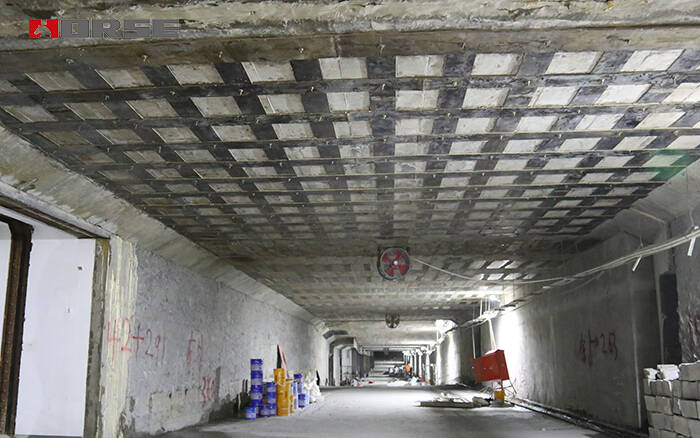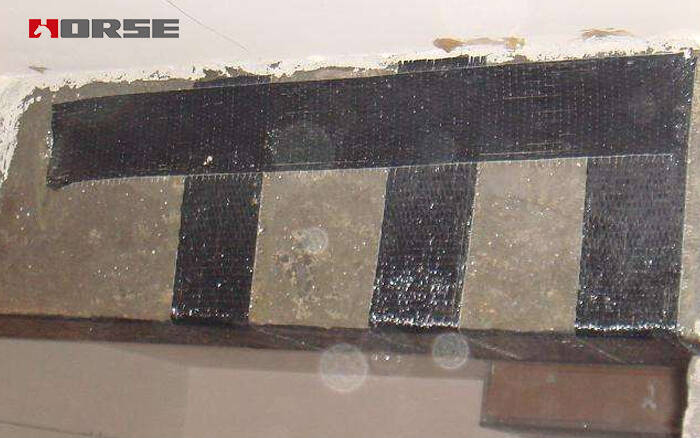Solutions
Horse Construction offers full range of structural strengthening materials with technical supports, documentation supports, products supports, project supports.
Give new life to the building-sharing of experience in structural reinforcement and transformation design

●"The original design used the function as an office. Now I am going to change the warehouse. The load has increased a lot. The existing structure cannot meet the bearing capacity. What should I do?"
● "I want to add another layer. Is the overall structure safe and will it affect adjacent layers?"
●"Renovation cannot affect daily operations. Is there a simple way of reinforcement? Think of a way for structural professionals."
......
In order to meet market demand, owners have more detailed and diversified management methods, and urban land is becoming increasingly scarce. In the process of structural design, the above demands are often heard. Structural reinforcement and transformation are measures to strengthen, partially replace or adjust the internal force of load-bearing structures, components and related parts that are insufficiently reliable or that the owner requires to improve their reliability. Make it have the current design specifications and the safety, durability and applicability required by the owner. In recent years, reinforcement projects have increased year by year, which has attracted much attention from the industry.
Reinforcement and renovation projects are different from new ones. The designer must not only know the theoretical calculations of the structure, but also understand the on-site construction procedures. Incomplete consideration of personnel, equipment operating space, scaffolding, and temporary safety measures during the design process will often lead to construction difficulties and potential safety hazards. To do this work well, design experience and construction experience are equally divided, and should be closely integrated with actual construction methods, and effective measures should be taken. For structural designers who have not been exposed to reinforcement design, they will feel confused after receiving the entire building renovation project. The following is a review of the structural reinforcement design process.
The first stage: collection of design data (provided by Party A)
1. Existing drawings and materials such as the original construction blueprint, drawing review form, change form, contact form, etc. of the building.
2. The calculation model corresponding to the original drawing data (clear the version number of the calculation software, due to different versions, the settlement results are different).
3. Completion (main body) acceptance report.
Complete and accurate design data can achieve a multiplier effect with half the effort. If the building is old and the calculation model is old and has no reference value, a lot of manpower will be required to remodel the project after the project is taken over. This part of the work will prolong the design cycle. Due to the diversity of structural design, different design ideas will lead to relatively large differences in calculation results. This will lead to the calculation results after the mold turning show that the existing reinforcement in the unreconstructed area is not satisfied, which disrupts the design ideas and brings about an increase in the amount of reinforcement. Do a good job of communicating with Party A in the early stage, and strive to obtain valuable and accurate design information.

The second stage: Demarcate the design interface with the original structure (provided by Party A, third-party inspection, and design unit)
1. The main reliability performance test report issued by a third-party appraisal agency.
2. Appraisal report of seismic performance.
3. Reinforcement special demonstration meeting.
According to the relevant provisions of the national code, professional inspections are required for foundations, structural layout and structural form, material properties, geometric parameters of load-bearing structures, crack damage, and lateral displacement of buildings. This part of the content is tested by a third-party testing agency and a test report on the reliability of the main body will be issued. According to seismic requirements, buildings with a subsequent service life of 50 should be subjected to seismic appraisal according to current national standards and an appraisal report of seismic performance should be issued.
According to the scope of reinforcement, it can be divided into whole building reinforcement and partial reinforcement. According to the project experience that has passed the external audit, the reconstruction scope is large, the load changes are large, and the main structure has a large impact, the whole building must be calculated and strengthened. The above two reports need to be issued. The reinforcement range is small, the load changes little, and the impact on the main structure is small. Only the reinforcement area and related areas can be partially reinforced, and the seismic appraisal report may not be issued. The reinforcement content can be coordinated with Party A to organize the reinforcement special demonstration meeting to discuss and determine.
The scope of reinforcement is related to the design workload and the cost of project reinforcement. A reliable and reasonable basis should be used to determine the scope of reinforcement.
The above two stages play a vital role in the entire design process. On the one hand, the adequate degree of preparation in the early stage directly determines the workload of the later stage of construction drawings. On the other hand, because reinforcement and transformation inevitably "damage the muscles and bones", it is necessary to divide the "responsibility area" and do a good job in the protection of the reinforcement design unit itself.
The third stage: construction drawing stage
Structural reinforcement is divided into direct reinforcement and indirect reinforcement. Direct reinforcement should be selected according to the actual situation of the project to increase the section reinforcement method, the replacement concrete reinforcement method or the composite section reinforcement method, etc. Indirect reinforcement should be selected according to the actual situation of the project, such as external prestress reinforcement method, additional support point reinforcement method, additional energy dissipation support method, or additional seismic wall method.
You can find anything here you are in need of, have a trust trying on these products, you will find the big difference after that.

High strength, unidirectional carbon fiber wrap pre-saturated to form a carbon fiber reinforced polymer (CFRP) wrap used to strengthen structural concrete elements.

High strength carbon fiber reinforced polymer (CFRP) strip / laminate / plate for structural strengthening and concrete repair

Prestressed carbon fiber reinforced polymer(CFRP) plate for slab, beam strengthening to increase stiffness, reduce distortion and deflection of members, reduce the cracks, avoid and stop cracking.